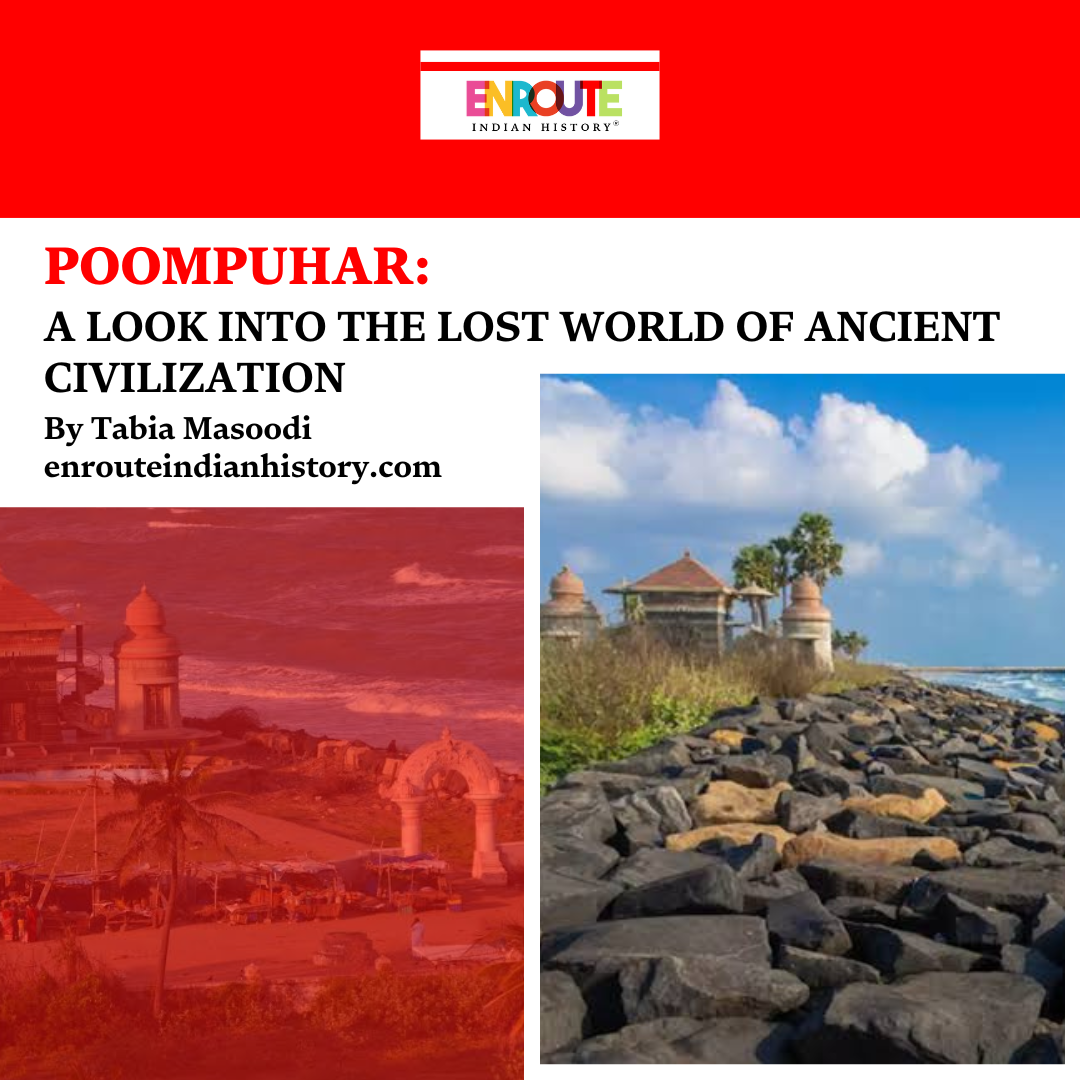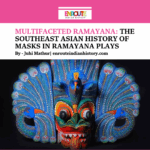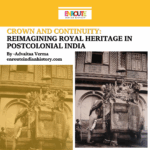Poompuhar: A Look into the Lost World of Ancient Civilization
- iamanoushkajain
- June 13, 2025

By Tabia Masoodi
As the saying goes, all great empires come to an end. Their great cities, capitals and architecture have all disappeared at some point in time. India is no exception to this norm. The subcontinent has been home to some of the greatest empires with magnificent capitals in the world, featuring genius civilizations, rich culture, literature, extraordinary architecture, and trading centres. Sometimes these cities implode from the empires' invasions, sometimes due to the forces of nature and other times due to the negligence of the rulers. The most brutal cause of the disappearance, however, remains the forces of nature, such as earthquakes, floods, tsunamis and plagues. This brute force of nature led to the disappearance of one of the most important and allegedly the oldest cities in the world. Poompuhar, whose existence is found in the Sangam literature, was a major port city that has been said to have existed 15000 years ago in the Southern part of India. However, the exact date is still conflicting.
The Sangam period, spanning from the 3rd century BCE to the 3rd century CE in South Indian history, was a time of significant culture and literature. The Sangam period saw the great dynasties of Cheras, Cholas, and Pandyas. Among these empires, the Chola dynasty exhibited great military prowess, sophisticated administration, marvellous art and, not to forget, its extensive maritime powers and trading centre in the image of Poompuhar.
Poompuhar, also known as Kaveri Poompattinam, Puhar, and Kaveripattinam, was the capital, alternate royal residence and a major port city of the early Chola dynasty, during Karaikal Chola. Cholas established it during the Sangam period, but the city could have been in existence for 15000 years before that and kept changing due to the change in sea levels. The city was at the mouth of the Kaveri River, 30 km away from present-day Poompuhar in Tamil Nadu, where it meets with the Bay of Bengal. The Poompuhar was a legendary trading port of the Chola dynasty. Traders from Rome, Greece, Egypt and China would come to trade with the Cholas. The city had big docks that, apart from trading, housed the military exercises of the Chola dynasty. The port was nothing ordinary; it could hold about 80 ships, such was the magnificence of the city and the genius people who lived there. There was also a lighthouse in Poompuhar, one similar to the Cleopatra lighthouse in Egypt.
Poompuhar in literature
In Sangam literature, such as in the epic of Silappathikaram, and the poems Pattinappalai and Akananuru, the city is described as a centre for culture and art. The city used to be vibrant, with festivals, music, and dance events celebrating art and culture. Its mansions and ships coming from distant shores are vividly described in literary works. Poompuhar finds its mention in various accounts apart from Tamil literature, such as Greek literature, in the book by Wilfred H. Schoff – The Periplus of Erythrean, provides accounts of its trade with Poompuhar. Buddhist literature such as Manimekalai and by Buddhist traveller and writer Buddhadatta mainly talks about the Buddhist influence on the city. Buddhadatta, in his manuals, describes the city as "filled with men and women, clear water in the river, precious stones, bazaars, gardens, a beautiful monastery built by Kanhadasa, high mansions, and elaborate entrance towers." He also gives a glimpse of society overall. According to him, people enjoyed rights and freedom and respected each other.
ARCHITECTURE OF POOMPUHAR
According to the Sangam literature, the city was divided into two districts- Pattinapakkam and Maruvurpakkam, which existed 2000 years ago. Pattinapakkam was the main city, a western district in the interior where palaces, royal gardens and habitation existed and Maruvurpakkam was the eastern district of Poompuhar, a coastal area, home to traders, fishermen and foreign traders. A long, wide road that connected the two served as the venue for markets(Pillai,1989). The marketplace was a thriving centre of trade, known as Allangadi at night and Naalagadi during the day. The street had distinct settlements for different socioeconomic groups, each occupying buildings with terraces where both Cholas and foreigners, like Greeks and Egyptians flags were hoisted. Poompuhar's architecture, which had mansions and warehouses with peculiar windows that resembled deer's eyes, was influenced by Mayan architectural concepts. The Pavai Manram, a pillar-supported octagonal hall adorned with statues of women representing justice, is one of the most significant cultural relics. Apart from these, Silappathikaram also mentions various temples and
Buddhist monasteries. It also records that artisans from different places like Ujjain and Avanti beautified the city.
The city featured a sophisticated harbour system with breakwaters, canals for ship movement, and warehouses for storing goods. Archaeological evidence suggests that Poompuhar had a sprawling harbour that measured approximately 11 km in length and 3 km in breadth, facilitating extensive maritime trade with regions as far as Greece and Rome. The main language spoken in Poompuhar was Tamil.
DISAPPEARANCE OF POOMPUHAR
The port city of the Chola dynasty possessed an unparalleled allure. It thrived with a rich culture and was bustling with trade and commerce. However, the glorious Poompuhar faced a tragic downfall. Once known for its strategic location that attracted traders and merchants from afar, it also contributed to its demise. Poompuhar vanished from marine history roughly 1,000 years ago, as the area is prone to flooding. The city was submerged and rebuilt at least four times over thousands of years before the Chola dynasty. Tamil literature provides evidence of its disappearance, indicating it was engulfed by the sea. Silapathikaram mentions that the city gradually vanished due to Kadalkol, which translates to sea-engulfing land caused by rising sea levels. Manimekalai records that the city was swallowed by the sea because the Chola king, mourning the loss of his son, neglected to celebrate the Indra Vizha festival, angering the goddess Manimekali (Gaur, A.S. & Sundaresh & Tripathi, S., 2003).
The theme present in Tamil literature regarding the city's disappearance correlates with the decay in the social fabric, justice, and the disregard for religious rituals and traditions. Although these literary accounts provide mythological explanations for the city's disappearance, archaeological and underwater explorations offer evidence that the city was indeed submerged due to natural calamities like tsunamis, as well as rising sea levels and erosion.
Until the 1960s, it was believed that the Poompuhar city was a mythical city like Dawarkha. Because of its complete disappearance, the lines between reality and mythology were blurred. It was when archaeological research led by archaeologist Dr K. V Soundararajan in the 1960s and 1970s in modern-day Poompuhar excavated submerged artefacts, wharf and structures that pointed toward the city mentioned in Tamil literature and the researchers concluded that Poompuhar was indeed an ancient port city of early Chola dynasty. Dr. Soundararajan found the Chola artefacts such as ancient iron objects such as arrowheads and swords, Roman artefacts, pottery inscribed with Tamizhi scripts, iron-melting furnaces and a bronze statue of a lion and various other items like beads and shell bangles. This discovery led to the determining of the age of the city as well as establishing the timeline of Poompuhar's existence and its historical significance. Marine archaeologists have found submerged ruins off the coast of Poompuhar, substantiating the claim of the tsunami. Further research also suggests the cause of the submerging of the city is the tsunami, as the Chola-period artefacts found on the Kaveripattinam coast have high-energy conditions, possibly from sea-borne waves correlating with reports of ancient tsunamis along the Indian Ocean (C. P., Rajendran et al.,2011).
More research confirms the cause of tsunamis as well as rising sea levels and erosion. Geological studies show that the sea levels have risen significantly over the years, from 120 meters below current levels to the present day. The Masalmani temple from the 11th century is already 50% submerged and destroyed by the sea. Marine research provides evidence of coastal erosion as studies show that the statue of Kannagi placed on the coast of Poompuhar in 1973 was moved in 1994 due to the coastal erosion destroying the base structure(Sasilatha et al.,2023).
According to Somasundaram Ramasamy, a professor in the department of remote sensing at Bharathidasan University, the city was submerged before as well, which let people migrate inwards towards the west, establishing the present-day Kaveripoompattinam. The satellite images have shown that the city was initially on Kaveri Delta-A, then shifted to Kaveri Delta- B and Kaveri Delta-C. During the research, Ramasamy and his team found evidence that suggested that the original Poompuahr was nearly 15,000–20,000 years old. This was based on the interpretation of offshore exploration and sea level data as well as the excavation of a harbour, dockyards, human settlements and a lighthouse, and the geological conditions of the seafloor near Poompuhar matched with sea level conditions that existed 15000 years ago. However, the data and claims are yet to be substantiated and need further research.
This study also discovers the magnificence of the architectural marvels of this ancient city. The docks found in the Poompuhar follow the same pattern as those of Neapolis in Greece, Alexandria in Egypt and King Louis in Mauritius. However, these are only 5000–6000 years old, while Poompuhar is believed to be 15000 years old. If the city existed 15,000 years ago, it would change the worldview of ancient civilizations and discoveries. It can challenge the existing timeline of civilization. The disappearance of Poompuhar, once the great city and mighty capital with music, art, literature and a bustling economy being devoured by the sea in its entirety, is a stark reminder of the vulnerability and vincibility of humans and the ferocious force of nature.
References
Iḷaṅkōvaṭikaḷ.(1989) Cilappatikaram. Translated by Pillai, R.S. Tamil University.
Gaur, A.S &, Sundaresh & Tripati, S.(2003) Underwater explorations of a Sangam period (300 BC-AD 400) port town at Poompuhar, east coast of India.
C. P., Rajendran & Rajendran, Kusala & Srinivasalu, Seshachalam & Andrade, Vanessa & Aravazhi, P. & Sanwal, Jaishri. (2011). Geoarchaeological Evidence of a Chola-Period Tsunami from an Ancient Port at Kaveripattinam on the Southeastern Coast of India.
Geoarchaeology. 26. 10.1002/gea.20376.
Sasilatha, T., Mohendran, G., Baldwin Immanuel, T., Fadil, M.H., & Ashok Kumar, M. (2023). Exploring the effects of sea-level change on an ancient port city through archaeological discoveries – Poompuhar. [Journal of Survey in Fisheries Sciences]
Ramasamy, S.M., et al. (2017) 'Coordinates and chronology of the ancient port city of Poompuhar, South India', Current Science, 112(6), pp. 1112-1114.
Lissa, M., Bhuvaneswari, V., Devi, T., Satheesh Kumar, J., & Rajeswari, R. (2022) 'Semantic data model for knowledge representation and dissemination of cultural heritage site, Poompuhar', [Current Science], VOL. 123.
Lissa, M., Bhuvaneswari, V., Devi, T., Satheesh Kumar, J. and Rajeswari, R. (n.d.) 'Semantic data model for knowledge representation and dissemination of cultural heritage site, Poompuhar', Department of Computer Applications, Bharathiar University, Coimbatore 641 046, India.
Jeyabalakrishnan, A. and Raja, R. (n.d.) ‘Tourism potentials in Poompuhar: A historical perspective’, RJISAC Journal.
Buddha, A.P. (ed.) (n.d.) Buddhadatta's Manuals Part 1, 2. Internet Archive. Available at:
https://archive.org/details/in.ernet.dli.2015.292621/page/n7/mode/2up



















